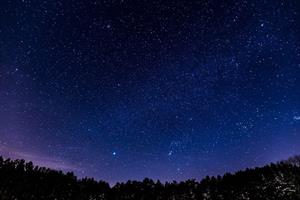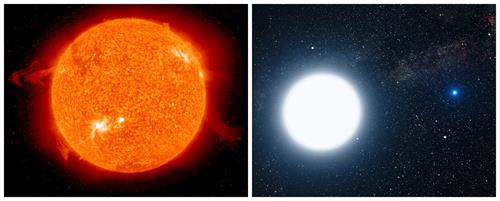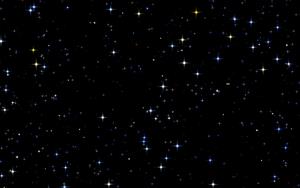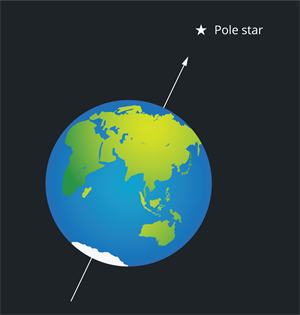PDF chapter test TRY NOW
When viewed from Earth, countless stars are also found on the night sky apart from the Moon. These stars are formed during the Big Bang along with the galaxies. In precise, stars are the basic building blocks of galaxies in the universe.

Stars at the night sky
Stars are celestial objects which emit heat and light on their own. They also produce ultraviolet rays, x-rays, and many other forms of radiation.
Stars are mainly composed of hot gases, like hydrogen and helium, along with a superheated state of matter called plasma. Stars emit a large amount of heat during the fusion of hydrogen atoms to form helium atoms.
Visibility of stars:
In the daytime, the stars are not visible due to bright sunlight. But on a dark night, nearly \(3,000\) stars can be seen with the naked eye. More than \(100\ billion\) galaxies are present in the universe, and more than \(100\ billion\) stars are present in a single galaxy. Like galaxies, stars also exist in pairs even though they appear to be alone.
In the daytime, the stars are not visible due to bright sunlight. But on a dark night, nearly \(3,000\) stars can be seen with the naked eye. More than \(100\ billion\) galaxies are present in the universe, and more than \(100\ billion\) stars are present in a single galaxy. Like galaxies, stars also exist in pairs even though they appear to be alone.
Colour of a star:
All the stars are not equally bright and do not have the same colour. The brightness of a star varies based on its intensity and the distance from the Earth, whereas the colour of the star depends on its temperature.
All the stars are not equally bright and do not have the same colour. The brightness of a star varies based on its intensity and the distance from the Earth, whereas the colour of the star depends on its temperature.
The hottest stars appear white or blue, whereas the coolest stars appear orange or red. Our Sun is a white star even though it looks yellow.

Hottest and coolest star
Twinkling stars:
The stars seem to twinkle at night because the light emitted by the stars enters the Earth's atmosphere in a zig-zag motion. It is due to the change in densities of the space and the different layers of the atmosphere.
The stars seem to twinkle at night because the light emitted by the stars enters the Earth's atmosphere in a zig-zag motion. It is due to the change in densities of the space and the different layers of the atmosphere.

Stars twinkling in the sky
Stationary star:
When a group of stars are observed, it appears to move from east to west due to the rotation of the Earth, which is from west to east. This makes the stars appear to move from east to west.
Pole star:
Pole star, also known as Polaris or North star, is situated in the direction of the Earth’s axis. Since the pole star lies close to the earth's axis, it does not appear to move. It is visible only from the northern hemisphere and cannot be viewed from the southern hemisphere.

Pole star
Sailors find the direction in the middle of the sea with the help of a pole star since it locates the north direction.
